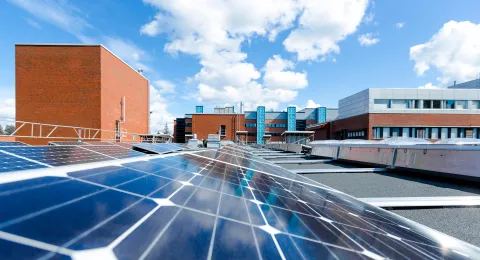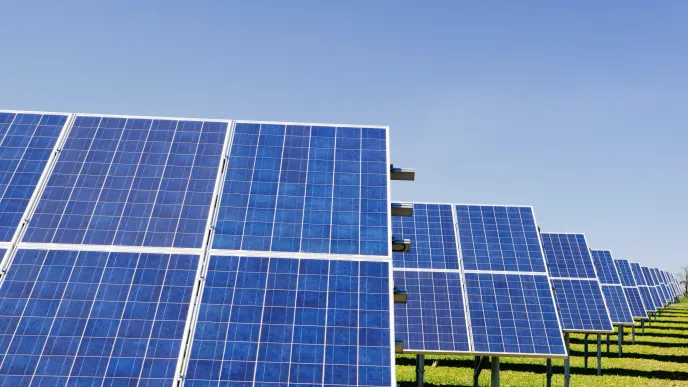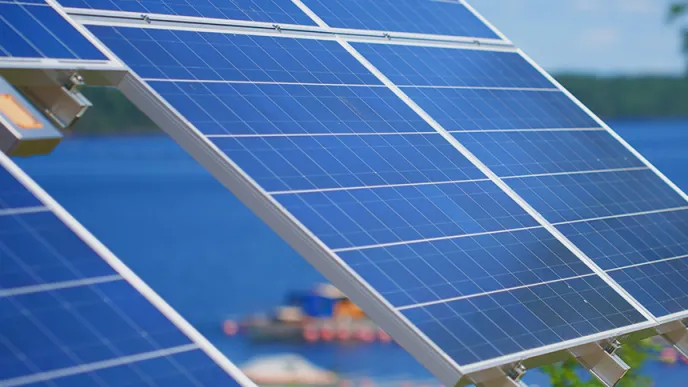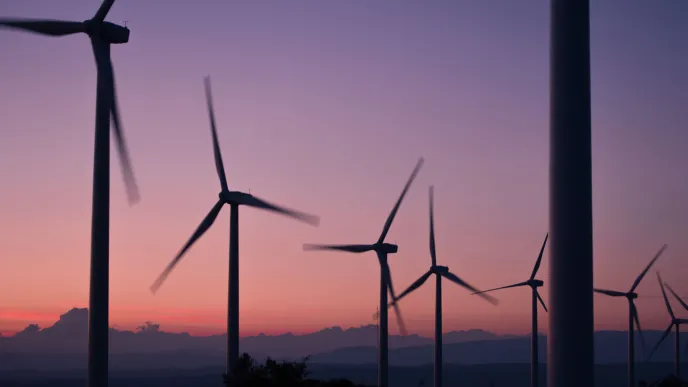This article's Finnish version was first published in February 2019 and has been updated in June 2023.
"Finland’s advantage is its low atmospheric temperature, which improves the efficiency of solar photovoltaic cells. The colder it gets, the better the solar panels work. Solar panels can also withstand snow loads if they are installed following directions. The system can also be coupled with the electricity grid, and the devices are relatively low-cost and easy to install,” explains LUT’s Associate Professor Antti Kosonen.
After the purchase and installment costs of the solar panels, the production of solar energy costs nothing: there’s enough sunlight to go around, and utilizing it doesn’t pollute or make noise. In Southern Finland, a solar panel with a surface area of one hectare has an energy production potential equivalent to 330 hectares of forest, which has an annual yield of ten cubic meters per hectare.
“Converting the radiant energy of the sun to electricity with photovoltaic cells is 200–400 times more efficient than forest biomass conversion in a power plant,” Kosonen compares.
Solar energy in the winter
Solar energy is available in Finland also during the winter. Façade installations work well in the Nordic countries because the sun is very low and vertical installations don’t gather snow. Wall panels produce a great deal of energy on sunny winter days – especially in March, when the sun is out more and the snow reflects light, increasing radiation in the direction of the panels.
Solar panels are becoming more frequent, as they are being installed in grocery stores, offices and public buildings.
The best option for market-based expansion is to install solar panels in convenience stores and office and municipal buildings.
New buildings require some type of cladding, so why not solar panels? The price of panels has dropped, which means they no longer need to be installed in an optimal angle to maximize annual production efficiency.
Closer to the equator, the sun shines directly overhead, making wall installations unprofitable. In Finland, however, the optimal installation angle in terms of annual production is rather steep. It’s an ace up the Nordic sleeve when it comes to installation possibilities.

Realistic goal – bureaucracy permitting
The share of solar power in Finnish electricity production is approaching one percent and won’t stop there: plans are in place to build several solar farms in Finland, each with hundreds of megawatts of production capacity. In addition, Finland’s transmission system operator Fingrid has received wind and solar power connection enquiries amounting to a total capacity of over 100 megawatts. Fingrid assesses that by 2030, the overall solar power plant capacity in Finland may climb to seven gigawatts.
Since 2019, the capacity connected to the main grid has increased by roughly a hundred megawatts annually. In 2022, the growth more than doubled. The Finnish Energy Authority states that in 2022, solar power production amounted to nearly 635 megawatts – more than a 240 megawatt increase compared to the previous year.
Finland still produces fairly little solar electricity compared to leading European countries. The Netherlands, in contrast, produce over seven times more per capita.
"Solar electricity should be taken into account in building architecture because it’s the simplest and most affordable way to produce electricity locally,” says LUT University’s Associate Professor Antti Kosonen.
LUT University has investigated how the profitability of solar electricity could be improved in different types of buildings in Finland. Researchers have debunked myths related to the orientation and dimensioning of solar photovoltaic systems and sales of surplus electricity.
Global capacity has doubled, which has led prices of modules to fall as much as 20 percent. In other words, when capacity doubles, prices plunge one fifth. The strong decline in prices of solar power systems has made solar electricity the least costly new form of electricity production nearly everywhere in the world. A full terawatt was first produced in March 2022, and a similar production peak is expected within the next three years.
Moreover, LUT’s Professor Christian Breyer estimates that a completely carbon-neutral electricity system based on renewable energy sources would be possible by the year 2050. He expects the global solar panel capacity to increase by 440 gigawatts annually up to the year 2030.
In Finland, solar electricity has so far been a financially competitive alternative only if the self-consumption rate has been high. Now, however, the situation is changing, as solar farms are being built to produce electricity to sell directly to the main grid.
Closing the gap on Europe
Globally speaking, solar energy generation is a massive business. Only a few years ago, Europe was the leader in solar energy, but now, competitors from the east and west are taking over: the largest solar electricity producers are now China, the US and Japan.
Areas with the most favorable conditions can produce roughly twice the solar electricity that Finland does. In the best areas, the total radiant energy is about 2500 kWh per square meter a year. In Finland, the corresponding figure is approximately 900 kWh per square meter – slightly more in the most southern parts and slightly less up north.
At an annual level, however, Finland gets roughly as much sunshine as countries such as Germany or Denmark. However, Germany produces 110 times more solar electricity than Finland, Denmark five times more, and Sweden four times more.
LUT has modeled an emission-free energy system and demonstrated that the share of solar energy in Finnish energy production should rise to 10 percent by 2050. That would mean a leap from the current 635 megawatts to 35 000. The rooftop potential of all Finnish buildings (residential, administrative, industrial) is about 34 000 megawatts. In other words, there is a great deal of untapped potential atop our buildings to further the green transition.
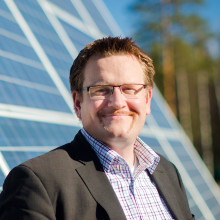
Solar power will be number one in the long run
The sun is a fusion reactor that produces energy free of charge. The fusion turns hydrogen into helium and releases large amounts of energy. All stars in the universe work the same way. The released helium is waste from the fusion process, and there is enough room in the universe for as much of it as the sun can yield. Assessments suggest that the sun’s lifespan is about five billion years, which means it will power many generations to come.
The sun produces energy naturally. In only 14.5 seconds, the sun can send enough energy to our planet to power the human race for an entire day. Until now, humankind has not possessed the technology to recover solar energy. Collectors of solar thermal power have developed in leaps and bounds in recent years.
Because of this development, humankind is on the verge of a major transition to a solar economy. The transformation includes all renewable energy sources, such as solar thermal power, electricity, wind, water and wave power, biomass in its different forms, and geothermal heat.
In the long run, after 2050, solar energy could be the main solution to energy production. It will very likely be a highly efficient way to produce electricity that could also be stored efficiently. Nonetheless, also water and wind power and bioenergy will be produced in areas where they are available.
The transition from fossil fuels to renewable electricity will take decades. Consequently, we should already be building solar electricity systems at an increasing rate. We can all do our own small part to reduce global carbon dioxide emissions. The first step in the right direction is installing solar panels on our rooftops.
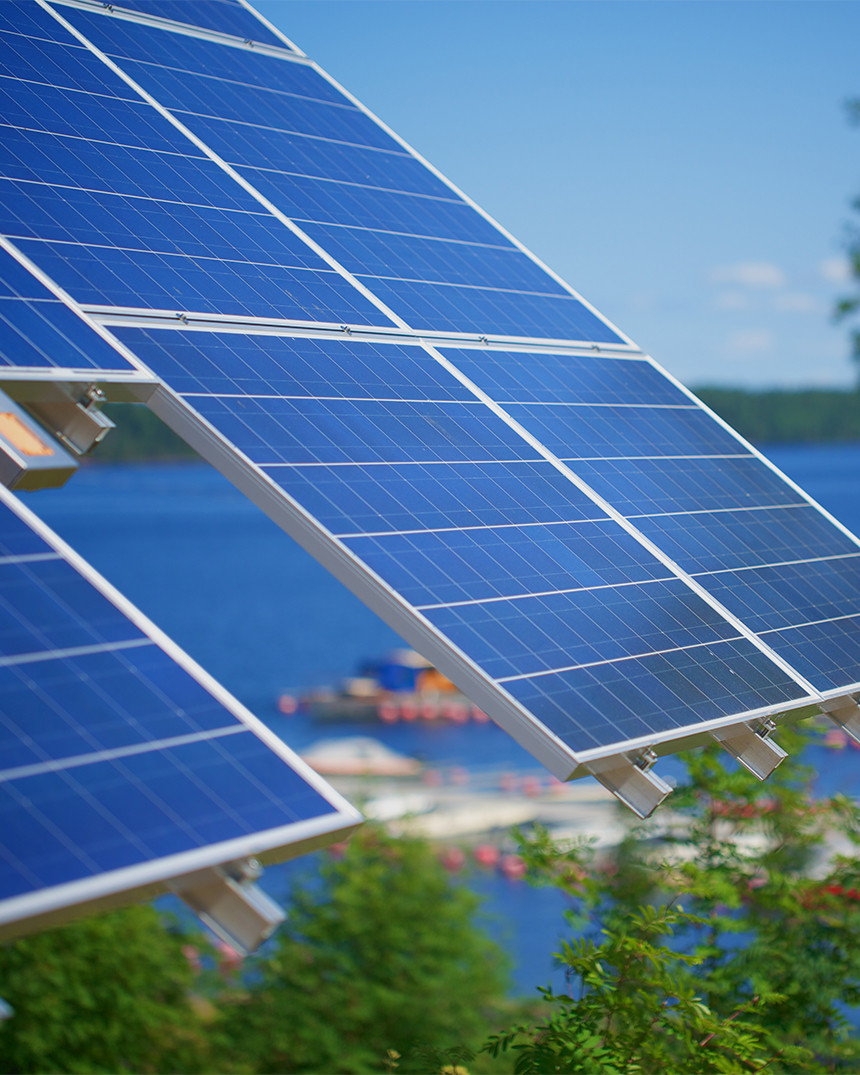
Towards cleaner energy
Clean energy refers to wind and solar energy, biofuels, and measures that aim for energy efficiency and the reduction of carbon dioxide emissions.
Europe has adopted two approaches to cutting carbon dioxide emissions. One is emissions trading, where a significant surcharge is imposed on fossil fuels that pollute. Emissions trading is meant to raise the production costs of fossil fuels, giving way for renewable energy. These efforts have, however, not led to a desired outcome because the emissions fees have been very low.
Another way to reduce carbon dioxide emissions is to remove obstacles to expanding solar and wind power construction. This would accelerate the development of the market. The underlying idea is to lower the price of renewable energy enough to make it more appealing than fossil alternatives. The price of solar panel systems has plummeted in recent years, making panels financially viable even without support schemes.
Mechanisms such as these have motivated individual citizens to become small-scale producers of electrical energy, and the movement is gaining ground also in Finland. However, setting up microgenerators should be made as easy for consumers as possible. According to Hanna-Mari Husu, associate professor of social sciences at LUT, the energy reform requires more equality and justice (the article in Finnish).
”The best option for market-based expansion is to install solar panels in convenience stores and office and municipal buildings. In fact, convenience stores have actively invested in panels,” says Kosonen.
Currently, the most important drivers of solar electricity in Europe are dependence on gas and the price of electricity. The war waged by Russia in Ukraine since 2022 has increased uncertainties related to the availability of energy and interest in renewable forms of energy production.
Challenges related to the increase of renewable energy
A strong increase in solar and wind power has many advantages but also involves challenges related to the management of the overall electrical energy system. Regulating weather-dependent production is still technically demanding or financially unviable. If both production and consumption fluctuate uncontrollably, managing the efficiency balance of the electricity system becomes even more difficult.
In an electricity system, production and consumption must be balanced at all times. The production of electrical power must follow the ebbs and flows of consumption. When the share of conventional electricity production capacity decreases, so does the flexibility of the electricity system. Changes in availability are seen directly in the price of electricity: the availability is periodically high and the price low, but when availability is low, the price shoots up.
For example, when a significant amount of solar and wind electricity produced at a guaranteed price hits the European market, the market price of electricity may sporadically be very low. This poses economic challenges for electricity producers operating without such subsidies.
Keeping the electricity system in balance will require a demand response. A demand response means restricting the consumption of electricity during peak consumption hours and postponing it to a time when rates are lower. Storing electricity and reacting to consumption peaks are ways to maintain a balance when the sun does not shine, the air is still, or weather changes rapidly.
The increasing use of renewable energy technologies has also prompted development in traditional power plants. To meet market demands, they have made their functionalities more flexible and are now reaping the profits.
In the future, it would be ideal if the energy production capacity could be expanded without subsidies and all energy production expenses were taken into account in cost calculations.
From consumer to prosumer
"In the future, two thirds of our daily need for energy will come from renewable sources,” assesses Christian Breyer, LUT’s professor of solar economy.
“Solar energy plays an important role in this. Energy production will become a part of people’s daily life: people will produce energy, consume part of it and feed the surplus into the grid for other consumers. We will become both producers and consumers – prosumers.”
According to Breyer, storage is the next major research gap.
"The availability and supply security of renewable energy must correspond to the demand for energy. That’s why we need to invest in energy storages."
Storage solutions already exist, but LUT has studied, for instance, how solar and wind energy can be converted to synthetic fuel, such as methane, for later electricity or heat generation. Methane is a chemical equivalent of biogas but without the carbon dioxide emissions if the production process employs sustainable carbon sources, such as carbon dioxide captured from the air, sea water, or pulp factories.
Synthetic fuels are becoming an important way to cut fossil emissions from transportation. Raw materials for the fuels include carbon dioxide and nitrogen from the air, hydrogen from water, and clean energy from solar or wind power. The technology can be applied to the manufacture of synthetic fuels such as methane, methanol or ammonia, but also adhesives, solvents, plastics and other processed chemical industry products. LUT also researches a wide range of other clean air and energy solutions.
LUT’s power-to-x project resulted in a unique pilot plant, Soletair. It is the only pilot plant in the world where all hydrocarbon manufacturing phases take place under one roof. The carbon dioxide for the process is captured from the atmosphere, the hydrogen is taken from water, and the energy comes from the sun. The research results are now being harnessed for business.
This power-to-x technology proves the feasibility of a new type of distributed energy production model. The model is global and can describe local, distributed energy production anywhere in the world.
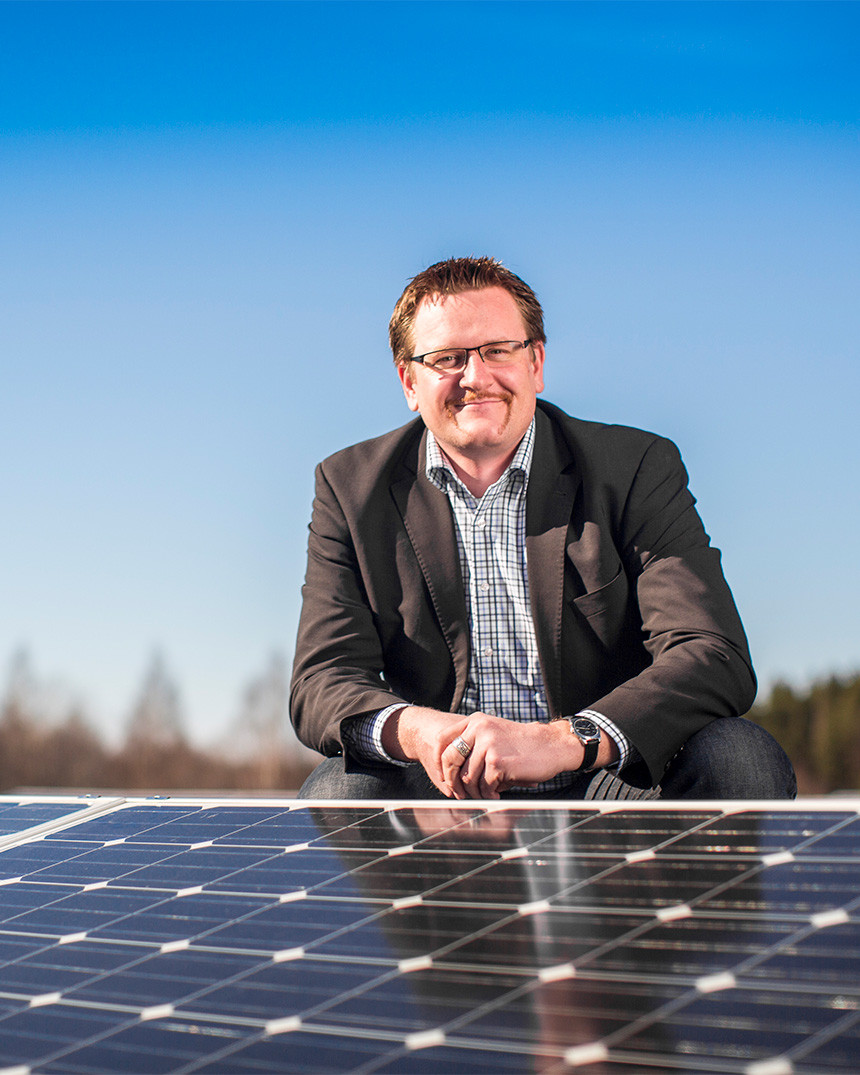
More information:

Antti Kosonen


